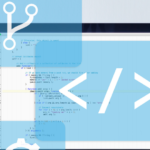Organizations are increasingly using the cloud instead of on-premise servers. It’s easy, convenient, fast to set up, and provides more security and reliability with minimal maintenance. Pay-as-you-go billing, zero upfront commitment, and scalability make cloud a wise choice for most enterprises.
However, at the same time, unnecessarily running resources may escalate your billing if you don’t have visibility. Additionally, you might be already paying more if you don’t notice the difference between your allocated resources and the resources you are using.
It’s challenging to maintain your entire architecture’s visibility when the business scales up. Organizations turn to cost management solutions such as Yotascale and CloudCheckr to gain insight into their cloud spending. Dynamic cost management solutions like these can help companies cut their cloud costs by up to 50 percent.
To help you decide which solution is right for you, we’ll compare Yotascale’s and CloudCheckr’s allocation of Kubernetes costs, tag granularity and automation, cost forecasting and budgeting tools, and automated anomaly detection. Then, we’ll explore a unique Yotascale feature, Yotascale Contexts, that allows you to granularly review your costs while maintaining your organizational structure.
Allocation of Kubernetes Costs
Containers are widely used to deploy applications because of their speed, security, and scalability. However, since it’s so easy to deploy and scale up the resources, organizations may be paying more than they should if they do not optimize their resource cost allocation. Companies need visibility into their deployed pods, namespaces, and clusters to control their spend.
Yotascale can break down Kubernetes costs by business or division, micro-service, or deeper at the pod or namespace level. Yotascale provides resource use data so you can execute decisions to reduce Kubernetes costs.
On the other hand, CloudCheckr focuses on cluster configurations to reduce the cost, which is less effective than examining specific resources at a granular level. Also, it does not offer the same granularity of Kubernetes resources cost allocation across the entire organization spanning different divisions, teams, and products. This lack of granularity means you are less likely to track down the offending resource and less able to trace it back to the people responsible.
Tag Granularity and Automation
Tags help maintain a large environment because you can assign key-value pairs to the resources. These labels help DevOps engineers manage, search, and filter the resources, which can be pivotal for auditing, invoicing, and analyzing to improve overall performance.
Yotascale has the edge over CloudCheckr here because of its unique automated tagging feature. Both platforms enable you to audit existing tags to display their similarities. However, Yotascale shines because it offers a complete solution from scanning tags to enforcing organization-wide naming policies. This enforcement further improves the cost breakdown granularity.
Yotascale’s inbuilt tool mitigates all the inconsistent tags. After the tag identification, it scans all resource names inconsistent with your naming policies. It prevents duplication issues such as “environment” and “env.” This automated tagging functionality helps provide a more detailed view of your vast resources. This complete and accurate visibility helps you forecast and make organizational decisions.
On the other hand, CloudCheckr relies on manual tagging. It only captures the tags the DevOps engineer assigned manually. The mapping feature does prompt them to use similar tags, giving better results, but it’s not error-less as human intervention is necessary.
Cost Forecasting and Budgeting Tools
When your organization is growing daily, spinning up new servers and clusters to meet evolving business needs, you have likely overlooked your budget at least once and paid a huge bill. However, you can avoid this by setting up your budget first. Then, your cost monitoring solution monitors your budget and forecast as you grow. Ideally, it notifies you when you go over budget or when it projects you will hit your monetary upper limit.
Yotascale Budgeting and Forecasting enables all stakeholders to view the use quota and forecasted data for a month, quarter, or year. Yotascale’s reliable machine learning-based budget analysis is more than 90 percent accurate. You can also directly integrate this tool into messaging platforms such as Slack to get timely alerts with necessary information.
This Yotascale feature works in three simple steps. First, you set a budget for your division, resources, or team. Second, you view the forecast and use data to verify if you are heading in the right direction. Lastly, if you receive the forecast overage alert, you make executive-level decisions to reduce resource use or increase your budget.
Similarly, CloudCheckr provides budgeting and forecasting tools to aid your profitability. It displays annual or daily data so you can visualize and analyze your use. However, it lacks dedicated forecasting and budgeting features like setting up a budget for specific groups, teams, or divisions. Also, it doesn’t provide accurate forecasting data like Yotascale. You need to rely on your finance team, and they need to rely on the data to perform their calculations, causing a higher probability of errors.
Automated Anomaly Detection
Suppose you need to spin up a Kubernetes cluster to test your product’s essential features. Then, after finishing your work, you forget to delete that cluster. It may run for weeks or even months. By the time you realize your error, it’s too late. You have already needlessly blown your project’s budget on unused resources.
However, Yotascale would have detected the anomaly and alerted you in near-real-time, saving all that money. Yotascale’s automated anomaly detection feature scans for any unusual pattern compared to previous resource use. It then alerts the right person through its Slack integration with precise information to quickly identify the root cause.
Yotascale can even automatically remediate the issue. For example, you can set a threshold to delete a cluster after, say, a week unused. When your team forgets to delete a test cluster, Yotascale removes it for you, saving weeks or months of needless spending.
Similarly, you can set up budget alerts in CloudCheckr to detect anomalies according to historical data. However, Yotascale’s near-real-time alerts make a difference in tight situations, helping you stop the overspend as soon as possible.
Yotascale Contexts
Yotascale Contexts is a unique feature that mirrors your organization’s financial cost structure. It works with automated tagging and your policies to provide context-based analysis at any level you need.
For example, you can get an organizational overview of your Development division, Cloud team, and Alpha application with the help of Yotascale Contexts. Since this tool tracks your assigned tags, it updates if you have added or removed resources from the current cost structure.
For more information about Yotascale Contexts, read the Overcoming the Challenges of Kubernetes Cost Allocation and Reporting whitepaper.
Conclusion
As you scale your cloud use, cloud cost management solutions help you keep your spending in check. Both Yotascale and CloudCheckr focus on optimizing Kubernetes costs. However, CloudCheckr’s approach relates to best practices and cluster organization, while Yotascale provides a granular cost breakdown to help you make better executive decisions.
Yotascale has the upper hand because it offers automatic tag allocation using predefined policies and tags to keep labels consistent and ensure everything is tagged. While CloudCheckr has a tags mapping feature, it lacks automatic tag allocation, inheritance, and policies to maintain consistency across the organization.
Similarly, Yotascale’s dedicated budgeting and forecasting tools help businesses focus less on tracking their budget and more on their deliverables. As well, Yotascale’s near-real-time automated anomaly detection helps reduce unnecessary spending, catching potential issues quickly.
Although both cloud cost management solutions help you control your Kubernetes spend, Yotascale’s granularity and automation provide a more detailed view of your spending, allowing you to quickly track down unused resources to save up to 50 percent of your cloud spend.
Schedule a free demo to learn more about how Yotascale’s automated tools and deep insights can help optimize your cloud spending.
If you’re interested in developing expert technical content that performs, let’s have a conversation today.




